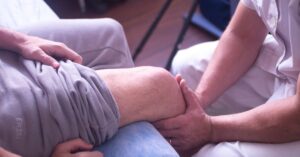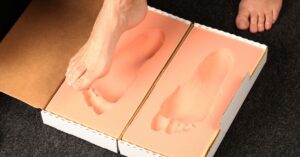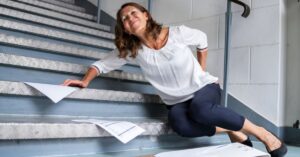Intervertebral Disk Bulge
Intervertebral Disk Bulge, also known as disk herniation, disk protrusion (aka Slipped Disk), and disk Degeneration (Degenerative Disk Disease), causes irritation and pain when pressed upon one of the lumbar spinal nerves that join to form the sciatic nerve. Sometimes, with severe degenerative disc disease, the sciatic nerve is pinched by bone ‘spurs’, but in most cases, it is bulging discs and ligaments responsible for the pain.
Causes
Disk injuries are probably the most common cause of chronic (long-term) back or neck pain. Sometimes it’s a constant pain, and sometimes it comes and goes. Sometimes it’s severe, and occasionally medium intensity, or it can even be milder. X-rays don’t show disc injuries until the disc shows signs of degeneration (disc thinning, bone Spurs) which indicates the problem has been developing for several years. To understand how the pain from the disc bulge can be relieved, we must realize how discs are built and nourished.
Treatment
Discs are built like jelly doughnuts, with jelly in the middle and rigid ligament rings, like tree rings, on the outside. Only the older third of the disc has nerve endings. So discs always tear from the inside out. So if you have a tear in the inner 2/3 of the desk, you won’t feel it. It’s like cutting your fingernail. But if the incision extends into the outer third of the disc, it will hurt, just like cutting your fingernail too short hurts. A tear in the outer third will damage like a sprained ankle can’t hurt. If you sprain your ankle, tiny arteries carry blood in your ankle ligament, so when you tear the ligament, it bleeds and swells and turns purple. Your body knows tissue damage because of the chemicals released into the bloodstream; As a response, a repair kit is sent through your arteries, causing it to lay down a scab, stopping the bleeding. Scar tissue will then fill in the tear; as the scar tissue heals, it will shrink, pulling the ends together. The scab is recovered within 4 to 6 weeks.
How We Can Help
The difference between a ligament and your desk is that the disc has no blood supply. The disc is living tissue, and it needs watching the blood, just like every other part of our body, so the disc works like a sponge. I have filters on the bones, vertebrae on the top and bottom and plates. When you sit or stand, your body weight squishes dirty water out of the desk, like squishing a wet sponge. The dirty water goes through the filter and into the vertebrae, where the rich blood supply washes it away and cleans it up. When you lay down and take your body weight off the disc, the disc slowly pushes the bones apart and, in doing so, creates a negative pressure that draws fluids into the desk, which is how the discs get the water, oxygen and nutrition that the disc cells need. But when the disc is torn inside, this doesn’t work anymore. It’s like a leak in the hydraulics.
There’s too much space for the jelly, so it can’t exert pressure against the bones to push them apart, so there’s no negative pressure to draw fluids into the disc, so it doesn’t heal. So when the disc tears, there’s no bleeding, but there’s also no ability to send a repair kit to the incision. Therefore, the pain of the tear often never goes away.
There is a weak spot with a tear into the outer half or third of the disc, which now bulges. If it puts pressure on the nerve that passes by the disc bulge, that can give you pain-tingling weakness in your leg. If the disc doesn’t heal, the bulge doesn’t shrink, and the leg pain doesn’t disappear. To get the distal heel, we need nutrients into the disk.
Optimum Alberta Back and Neck Rehab utilizes advanced technology to treat Intervertebral Disk Bulge with Non-surgical, Spinal decompression. By very slowly stretching the injured disc, decreasing the pressure inside the disc, and subsequently drawing fluids from inside the vertebrae, through the filters and into the disc. As fluids and nutrients come into the desk, your body these down scar tissue in the tear and the disc and he’ll. As the scar tissue heals, it shrinks and pulls the bulge off the nerve, causing the leg pain to fade away and the strength to return.
This process takes 4-6 weeks for most people. It doesn’t work for everyone, but it works for most people.




